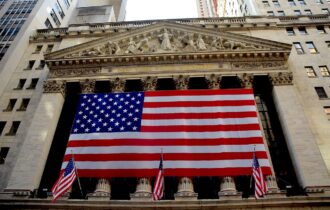
Finance and investment wrap – August 2017
One thing that has changed and is unarguably the most important event so far this year is the central bank narrative. After nearly a decade of buying bonds (quantitative easing), the US Federal Reserve’s (Fed) talk has finally turned to “normalising” their balance sheet. They may well raise interest rates again too, at their September meeting.
This brings us nicely along to the current state of stock markets. How might they react to higher rates, which have traditionally hindered equity growth? Not well, I guess you might say. Concerningly, we have some of the highest equity valuations in history at the moment – particularly in the US stock market, where equities have only been more expensive than they are now prior to the dot com crash in the early 2000s.
If we are at the top of the market, investing now could mean you have a long—and volatile—time to wait for meaningful growth. This will be particularly relevant to investors who buy passive funds and trackers, as these can only follow the market if it starts going downward. Consider active funds so you at least have a chance at outperformance. If you want to focus on preservation of capital, you may also want to look at targeted absolute return funds that aim to deliver positive returns in any market conditions.
United Kingdom
The FTSE has not joined in with the euphoria in the US, partially as a result of the strength of sterling, which makes the UK a more expensive place for overseas investors, as well as the ongoing squabbling over Brexit. The economy is doing a lot better than many feared and we may get out of Europe on far better terms than it currently appears. Uncertainty is always with us however and this bull market continues up the ‘wall of worry’.
United States
The S&P, the Dow Jones and the NASDAQ have all made new highs in July on relatively low volume, mainly from the ETF brigade. Given our comments in the introduction, this is a time for caution, especially as the shennanigans in the White House go from bad to farcical and the Fed look set to continue raising rates into an economic slowdown.
Europe
The narrative from the European Central Bank has also changed and its president, Mario Draghi, also has more than hinted at the intention to remove quantitative easing at some unspecified stage in the future. Bond markets fell sharply initially, but weakness in European equities has reintroduced the ‘flight to safety’ factor.
Japan
It has gone ominously quiet in Japan; possibly due to their proximity to North Korea. The 20000 level for their Nikkei stock index is proving to be stubborn resistance.
Asia Pacific and emerging markets
The markets are perhaps reading signs of dollar weakness (traditionally good news for emerging markets) and that the Fed probably won’t push through more than one further rate rise. Longer term, the growth potential, relative to western markets, is significant, but in any ‘emergent’ market, tomorrow’s winners won’t be those of today. A market where active managers are a must.
Commodities and gold
The oil price has pushed above US$50 barrel, which, in itself, doesn’t presage higher prices, but a backwardation in the futures contracts suggests that it may be on the cards.
Gold continues its rally from the January lows, buoyed by the uncertainties about just where the US is headed in terms of trade, immigration, interest rates, foreign policy and in fact pretty much everything. A move above the 2016 high at US$1375 would be very good news for the gold bugs; a break above US$1300 would be a good start.
Bonds
It is still early too early call the end of the 35-year bond bull market. The market does appear to be bottoming with the 2016 low only marginally below that of 2012, but we have had similar spikes up in yield before. However, the change in central bank rhetoric has added to the impetus for higher bond yields and a break above 3% for US treasuries would be significant.



